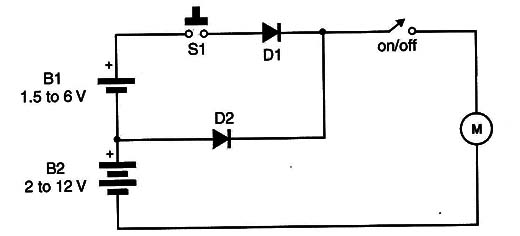
With S1 not engaged, the power is applied to the motor from battery B2. If S1 is pressed momentarily, the voltage applied to the motor increases by a step determined by B2.
The power boost can be enough to help the robot or other device pass or remove the obstacle. A relay in the robot with a “boost” function in the control can be used in these projects. Sensors, or even a microprocessor, can also be used to control the operation of this booster block.
The function of diode D2 is to keep battery B1 from encountering a short circuit when S1 is pressed.
D1 and D2 can be 1N4002 for motors up to 1 A and 1N5404 for motors up to 3 A.



